Best binoculars for kids 2024: Small and lightweight binos for younger users
The best binoculars for kids offer great views in a package suitable for smaller hands and faces.

1. The list in brief ↴
2. Best overall
3. Best for detail
4. Best for all-weather use
5. Best all-rounders
6. Best for the whole family
7. Best value for money
8. Best lightweight option
9. Best for young kids
10. Best for glasses wearers
11. Best for portability
12. Kids binos FAQs
13. How we test
Purchasing a pair of the best binoculars for kids is a great idea if your youngster is showing an interest in stargazing or getting closer to nature. If you're a binoculars user yourself, there's a good chance your children might be keen to get their hands on your own pair — but a pair designed specifically for smaller hands will undoubtedly be a better idea.
Not all the binoculars on this list have been necessarily designed for children. Some have, but we've carefully chosen models that are suitable for smaller hands, are lighter, and are user-friendly and easy to use.
We've been careful to avoid including any toy binoculars on this list. Search for binoculars for kids' on any retail outlet, and you'll get plenty of cheap, plasticky suggestions. Rather, our suggestions here are real pieces of optical equipment that work just as well as any binoculars used by adults — just like the sets we included on our guide to the best compact binoculars. We've also made sure to choose products that can withstand some gentle mistreatment and shouldn't break if dropped a few times.
We know it can be difficult to find binoculars that are suitable for children but also not a somewhat novelty item or a toy, and with this in mind a lot of the pairs we've featured here are binoculars that have been designed for adults, but that fit perfectly into small hands too. You'll find pocket-money-friendly sets in this guide, going all the way up to high-end offerings if you want to splurge on a birthday gift.
We've made sure to test the binoculars on this list ourselves (with a little help from younger members of our families), and have noted the features we liked and the things that weren't so great, so you can pick your pair with confidence.
If you're looking for something a little different, we've also rated the best night vision binoculars, or, if you want binoculars that measure distances, try our comprehensive rangefinder binoculars. If you aren't sure what makes for a good pair of binoculars for youngsters scroll down to the bottom of this guide for the best binoculars for kids FAQ.

Jamie is an experienced science, technology and travel journalist and stargazer who writes about exploring the night sky, solar and lunar eclipses, moon-gazing, astro-travel, astronomy and space exploration. He is the editor of WhenIsTheNextEclipse.com and author of A Stargazing Program For Beginners, and is a senior contributor at Forbes. His special skill is turning tech-babble into plain English.
The quick list
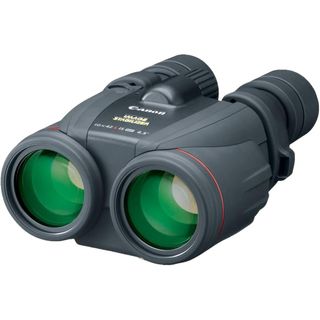
You won't need a tripod thanks to the excellent built-in stabilization here. They're expensive, but if your kid is serious about watching the skies, these are the ones to go for.
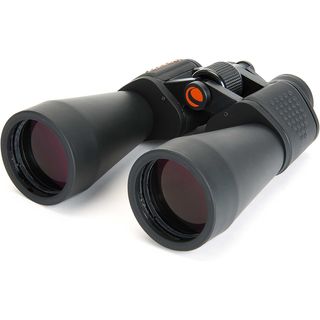
Slightly bigger than some, but their excellent grip and water resistance makes the Celestron SkyMaster 12x60 a good choice for kids. They're easy to adjust/focus and can be mounted to a tripod, taking the weight out of small hands.
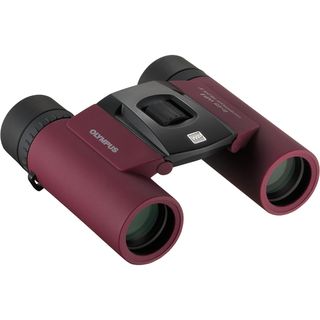
Waterproof and fogproof, we love the outstanding build quality of the Olympus 8x25 WP II. Their light size means they're comfortable for long use and they boast fantastic contrast and clarity.
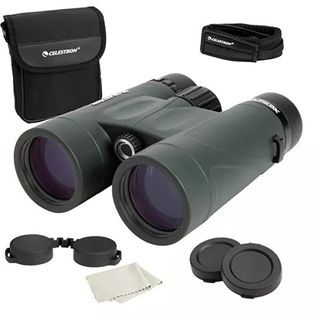
The waterproof sealing on this pair of binoculars makes them versatile for both day and night time use. They were built with the outdoor enthusiast in mind.
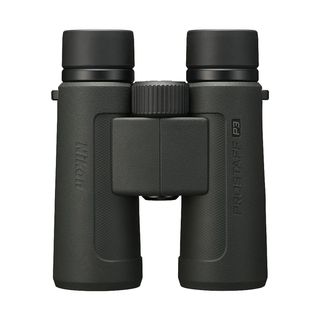
A premium build quality makes this pair of binoculars a joy to use. They're small and compact enough for anyone in the family to pick up, and their optics are surprisingly good.
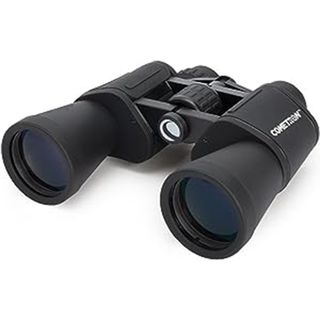
The Cometron 7x50 binoculars don't have the best optics in the world but considering their price point they're good enough. We particularly love their wide field of view.
Load the next 3 products ↴
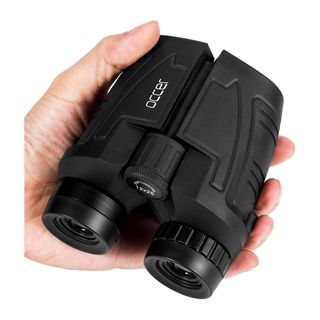
Some of the smallest binoculars around, the Occer 12x25 compact binos are great for youngsters — and boast both great quality optics and excellent grip given their tiny size. The moon looks awesome through these!
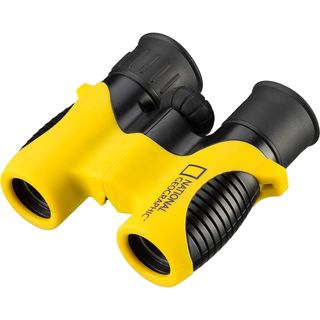
These binoculars are actually designed with kids in mind so make a great set for the youngest members of the family. Despite looking toyish, though, they still offer great optics.
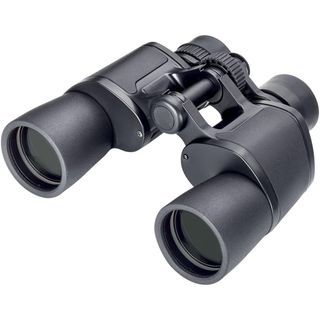
The long eye relief here is a great option for kids who wear glasses, fully multi-coated, quality BaK4 glass offers outstanding optics. They're waterproof too.
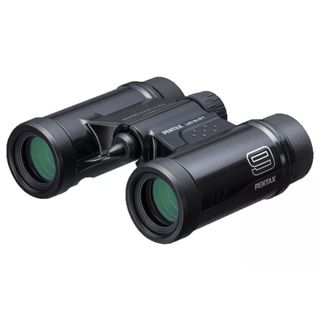
Best styling
We love the design, colors, and light weight of these Pentax UD compact binoculars. They're fully multi-coated, too.
Best binoculars for kids that we recommend 2024
Why you can trust Space.com
Best overall








Specifications
Reasons to buy
Reasons to avoid
✅ You can afford to: Chances are if you're looking for 'kid-specific' binoculars, you won't want to spend a lot. But if you're lucky enough to have the budget to get the best of the best, you won't be disappointed.
✅ Your child will benefit from built-in image stabilization: These are the only binoculars on this list with built-in image stabilization — view the stars, wildlife, sports events and concerts without any wobble!
❌ Your child won't use them often: They are a big investment, so if your child won't get much use from them, opt for a much cheaper pair.
❌ Your child wants to use binoculars unsupervised: We strongly recommend these binoculars are used under supervision and with the neck strap attached to prevent drops and breakages.
🔎 Canon 10x42L IS WP Binocular: Pricey but almost perfect for hand-held astronomy. In a market saturated with low-priced astronomy-centric binoculars, some clear, sharp and high-resolution optics and image stabilization wizardry make the waterproof Canon 10x42L IS WP binoculars expensive but worth it. ★★★★★
We're taking a bit of a risk by naming the Canon 10x42L IS WP binoculars as the best binoculars for kids. After all, their price tag far, far exceeds what you're probably expecting to spend on some binoculars that your youngster may or may not love. We agree: these are very expensive, and if your child isn't sure yet whether they're interested in stargazing or nature-spotting, it's probably not a wise purchase. But if your youngster is committed, and you want them to have the very best? You won't be disappointed.
Just why are the Canon 10x42L IS WP binoculars so expensive? It's because they have built-in image stabilization (IS). It's a technology you'll find in expensive camera lenses which makes the view in the lens stable even if you're not using a tripod. Holding binoculars still is challenging, especially for a child, and with a 10x magnification, you'll almost always need a tripod. But these Canon binos do away with the need for additional stability, allowing for sharp, wobble-free views in even the smallest of hands.
There's a reason we gave these binos five stars in our Canon 10x42L IS WP review—lots of reasons, in fact. We'd go as far as to say that anyone who uses them, kids or adults, will be amazed by their capabilities. But since this is a specialist (and therefore expensive) piece of technology, we wouldn't recommend children use them without supervision. We'd also recommend using a neck strap at all times to prevent accidental drops.
As for the actual technology supporting the Canon 10x42L IS WP binoculars, you've got gyroscopic sensors on board to detect any wobbling or shaking. If there is any wobble detected, actuators around the lenses of the binoculars move the lens in such a way as to counteract the wobble. This stabilization (which requires two AAA batteries, just so you know) is just one of the reasons why these binoculars produce pin-sharp images.
Whether you're looking at the moon, Jupiter or star clusters, you and your family are going to be treated to genuinely incredible views. It's not just the image stabilization you're paying for — inside are the ultra-low dispersion glass lens elements and 'Super Spectra' lens coatings.
- Read our full Canon 10x42L IS WP binoculars review
| Attributes | Notes |
|---|---|
| Design | Waterproof design |
| Performance | Bright and colorful images |
| Functionality | Image stabilization provides steady views |
Best for detail





The Celestron SkyMaster 12x60 ships with a soft carry case, neck strap and a lens cleaning cloth.

Specifications
Reasons to buy
Reasons to avoid
✅ You want to stargaze with them: The huge aperture drinks in loads of light and can be used for deep sky astronomy.
✅ Your child wears spectacles: The eye relief is a generous 17mm so these are comfortable for glasses wearers.
❌ You don't want to buy a tripod: The amount of wobble caused by the 12x magnification is too big to enjoy the views for any length of time without leaning them on something. In reality, this means purchasing a tripod.
❌ You want something lightweight and portable: These binos weigh over 2.2 lb / 1kg.
🔎 Celestron SkyMaster 12x60 Binocular: Great value for an excellent pair of low-light-friendly binoculars with fantastic specs and a quality design. The tripod adapter is especially welcome given the high magnification. ★★★★½
The Celestron SkyMaster 12x60 binoculars probably aren't a great choice for very young children. Weighing over a kilogram (39.02oz), they're going to be very heavy to lift for extended periods of time for smaller users. But for older kids and teens, particularly those who may have outgrown smaller, lower-powered binoculars, this is an absolutely wonderful choice.
While you can use the Celestron SkyMaster 12x60 binoculars for other tasks, they've been designed with observing the night sky in mind. Coming from Celestron, one of the leading brands in astronomy equipment, what can you expect? They're perfect for viewing the deep sky, and we've been able to enjoy views of objects such as the Andromeda Galaxy with no problem. So for older children with a keen interest in the night sky, binoculars don't come much better than these — especially considering their $70-or-so price range.
Built around a Porro Prism design featuring BaK-4 glass and boasting multi-coated optics for bright and detailed views, the objective lenses of 60mm let in heaps of light. Thanks to the 12x magnification, these binoculars are perfect for spotting moon craters and resolving individual stars in clusters like the Pleiades and Hyades — but we wouldn't recommend purchasing them unless you have (or purchase) a tripod.
In our Celestron SkyMaster 12x60 binoculars review, we talked about how much we appreciated having the extra stability of a tripod. It's something we'd call an absolute must for younger users — without a tripod, that 12x magnification can be endlessly frustrating, bordering on almost impossible if you're hoping to watch the night sky. The great thing about setting up a tripod, too, is that views can be shared between siblings or groups of children without having to adjust each time.
We're fans of the tough rubber coating found on the Celestron SkyMaster 12x60 binoculars: It's a must-have for children, essentially shielding these binos from any accidental bumps or knocks. Even better, they come with a carrying case and lens caps, so when they're not in use they're safely packed away.
- Read our full Celestron SkyMaster 12x60 binocular review
| Attributes | Notes |
|---|---|
| Design | Excellent build quality |
| Performance | Excellent light transmission |
| Functionality | Generous 17mm eye relief |
Best for all-weather use







Specifications
Reasons to buy
Reasons to avoid
✅ You're likely to use them in inclement weather: They are nitrogen purged with aids with waterproofing, fog proofing and dirt-proofing.
✅ You're looking for a reasonably priced but good-quality all-round user pair: They sit at a price point of around $70 — that's a great price for top-quality optics and excellent build quality.
✅ You want something pocketable: They weigh just 260g and have a dual-hinge design to fold them neatly away and pop them in your pocket.
❌ You want binoculars primarily for stargazing: The little aperture doesn't let enough light in for anything more than moon observations, though your little ones will be able to see more light through them than you will.
🔎 Olympus 8x25 WP II Binocular: The Olympus 8x25 WP II's seamless housing and exquisite optical system offer small but clear, crisp views of bright targets with stunning contrast. ★★★★½
Generally speaking, the relatively low 8x magnification and the 25mm objective lenses of the Olympus 8x25 WP II binoculars mean they're not so good for stargazing. They just don't have the appropriate light-gathering power to produce bright, sharp images that are necessary when viewing the night sky. However, when you're shopping for a child, your binocular must-haves change somewhat: You'll also have to consider weight, size and image quality. In that case, we've found these to be a rather good choice for kids.
In our Olympus 8x25 WP II review we found these binoculars to be a durable and kid-friendly option for young people who love the night sky and the great outdoors. In many cases, buying binoculars for a child for the first time may just be a test to see whether or not they enjoy the hobby. If it's something they become passionate about, you'd likely upgrade to a better quality, more powerful (and likely more expensive) set later on. Costing around $70, the Olympus 8x25 WP II is a good first choice.
The Olympus 8x25 WP II binos have a roof-prism design and BaK-4 optical glass. That makes for beautifully bright and clear images, which is particularly useful whether you're viewing the night sky, watching an event or observing nature. Their technical specs make them suitable for most users, but it's their small size which makes them most ideal for children. They can be easily adjusted for smaller faces thanks to a central hinge — and that means the same pair can be passed around between you and your child, or shared between siblings of different ages.
The nitrogen sealing of the Olympus 8x25 WP II binoculars is a great feature, making them waterproof, dirt-resistant and fog-proof. Let's face it: With the best will in the world, children are more likely to get their binos dirty or splash them with water, and so that extra protection offers some great peace of mind. It also means they're usable in inclement weather.
They're easy to fold up and carry in a pocket, and the paltry 260g weight is just a fraction of the weight of many skywatching-specific binoculars and is ideally suited to smaller hands and weaker arms. You can purchase them in 'Forest Green' or 'Deep Purple,' which may add to the aesthetic appeal for young users. The only thing we'd recommend, as we mentioned in our Olympus 8x25 WP II binoculars review, is to upgrade the neckstrap so it's more comfortable.
- Read our full Olympus 8x25 WPII binoculars review
| Attributes | Notes |
|---|---|
| Design | Excellent, high quality build |
| Performance | Good views of bright night-sky targets |
| Functionality | Low light-gathering prowess |
Best all-rounders
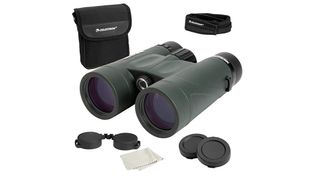
Celestron Nature DX 8x32 Binocular
Our expert review:
Specifications
Reasons to buy
Reasons to avoid
✅ You're looking for a good all-rounder: These are general-purpose binoculars that can be used day and night in any weather.
✅ You want to share the views with others: They are tripod mountable so once you've had a look at what's in the field of view, you can show someone else without them having to readjust.
❌ You want something stargazing specific: These are a generalist pair for casual observations. Though you'll be able to get good views of the moon and other bright celestial subjects, you'll want something with a bigger aperture for stargazing.
🔎 Celestron Nature DX 8x32 Binocular: A great all-round pair that will see you through many years of stargazing as well as wildlife watching and getting closer to sporting action. ★★★★
We've chosen the Celestron Nature DX 8x32 as one of the best pairs of binoculars for kids for multiple reasons. First, they're lightweight, making them suitable for smaller hands. They're coated with a tough, grippable material, too, meaning they'll sit comfortably in a child's hands without slipping out. Their waterproof coating helps give them some additional resistance, too, meaning they won't be affected by rain or a bit of a splash.
However, it's probably the fact that the Celestron Nature DX 8x32 binoculars can be used so easily for a variety of purposes that makes them so easy to recommend. Despite coming from Celestron, they aren't necessarily made for stargazing — they're part of Celestron's 'Nature' range, meaning they're designed for watching wildlife. But we've found them suitable for both tasks, just as long as you're not hoping to achieve deep sky views.
We particularly like how comfortable these binoculars are to use. The Celestron Nature DX 8x32 have a larger eye relief (17.5mm), which makes them great for glasses-users. The BaK-4 prisms ensure great contrast and sharp images, too. Couple that with the multi-coated lenses and you're going to get excellent light transmission.
We're also pleased that these binoculars have a built-in tripod mount, something that's not all that usual in a pair this size. Their 8x magnification means that extra stability is often needed to get the best views. Mounting binos is also a good idea if views are going to be shared between the family or a group of kids: everyone can take a look without needing to refocus.
- Take a look at our Celestron telescope and binocular deals hub
| Attributes | Notes |
|---|---|
| Design | Waterproof design |
| Performance | Versatile for day and night |
| Functionality | Not designed specifically for skywatching |
Best for the whole family






Specifications
Reasons to buy
Reasons to avoid
✅ You are looking for a pair of 'go anywhere' binoculars: These binos are kid-friendly but also a great quality pair for adults.
✅ Durability is a must: Not only are they guaranteed to be fog and waterproof, but they also feature a shockproof rubber coating.
❌ You don't want to spend too much: Though they are good value for money, they are still usually between $110 and $150 which is one of the more expensive models on this list.
🔎 Nikon Prostaff P3 8x42: Reasonably priced and easy to use, the Nikon Prostaff P3 8x42 binocular is suitable for beginners and hobbyists alike who want bright, sharp optics in a compact device. ★★★★
Are you looking for a pair of binoculars that not only your kids can use, but you can use too? The Nikon Prostaff P3 8x42 might be a good choice: these are binoculars that are small and lightweight enough for children to use with ease, but offer excellent optics that can be enjoyed by the whole family.
In our Nikon Prostaff P3 8x42 review, we praised the mirror-coated prisms and multi-coated lenses used here, which resulted in clear and sharp views. They're not the cheapest binoculars, however — prices typically fluctuate anywhere between $100 and $150 — but they are great for beginners thanks to how easy they are to use. We'd highly recommend them for glasses wearers, too, thanks to their larger-than-usual eye relief.
Like some of the others on this list, the Nikon Prostaff P3 8x42 binoculars come with fog and water resistance, making them ideal for use in just about any condition without worry of breaking them. They're guaranteed waterproof up to 1 meter/3.3 feet for up to 10 minutes, too, so if they fall in a body of water, it's not the end of the world. Their non-slip rubber coating should minimize the risk of drops at least, as little hands will be able to grip them firmly.
As mentioned before, 8x magnification with a 42mm objective lens is perfect for kids' binoculars, and this pair from Nikon is just that — perfect for light-gathering and stargazing. Nikon Prostaff P3 binoculars are also available in 10x30, 10x42 and 8x30.
- Read our full Nikon Prostaff P3 8x42 review
| Attributes | Notes |
|---|---|
| Design | Waterproof and fogproof |
| Performance | Sharp and bright views |
| Functionality | Premium feel in the hand |
Best value for money





Specifications
Reasons to buy
Reasons to avoid
✅ You're on a tight budget: For a full-sized pair of binos, you won't find much cheaper than this pair.
✅ You don't know if the hobby will last: At the time of writing these binos are less than $35; it's a relatively risk-free way of seeing if your child's hobby will last.
❌ You want the best quality glass: This pair uses the inferior BK7 glass which means the edges will appear more blurred than if BaK-4 glass was used.
❌ Your child wears spectacles: The 13mm eye relief is no good for glasses wearers — they likely won't be able to see the entire field of view.
🔎 Celestron Cometron 7x50 Binocular: If you are looking for a very inexpensive entry to the joy of binocular skywatching, you can't do much better than Celestron's Cometron 7x50. ★★★★
The Celestron Cometron 7x50 binoculars are a great choice for kids who might simply be experimenting with a new hobby. If you aren't sure if stargazing or nature-watching is something your child will end up enjoying in the long term, this budget-friendly pair of binoculars is an excellent place to start.
In our Celestron Cometron 7x50 review, we called these binoculars "remarkable value for money". You can typically pick them up for between $40 and $55, although we've found them for even less on occasion. You're unlikely to get a pair of binoculars as capable for any less: They're excellent quality, easy to use and great to use in multiple scenarios.
They are a little on the larger side, which may make them slightly unwieldy to use for really small kids, but they're still small enough for most children to enjoy. Their large aperture and 7x magnification means they're a fantastic introduction to stargazing, and they're capable of letting in a lot of light.
It also helps that the optics in the Celestron Cometron 7x50 binoculars are great considering their price point. You're getting multi-coated optics and a stargazing-focused Porro prism. Their exit pupil is larger than normal, too, which guarantees maximum light at night and in low-light conditions.
However, there are a few drawbacks to keep in mind—though these are to be expected given the budget price we're dealing with here. It's worth noting that the Celestron Cometron 7x50s use BK7 glass rather than BaK-4, which is less favorable. And despite being listed as water-resistant, remember that's not the same as waterproof, so you won't be able to use these in heavy downpours.
Keep those things in mind, though, and you can have a pair of binoculars that offer truly excellent value for money.
- Read our full Celestron Cometron 7x50 review
| Attributes | Notes |
|---|---|
| Design | Water-resistant (not waterproof) |
| Performance | Useful for other subjects in the daytime |
| Functionality | Wide FOV |
Best lightweight option






Specifications
Reasons to buy
Reasons to avoid
✅ You want a pocketable pair: They weigh just 8.8 oz / 249g and fit nicely in the palm of your hand. Not only are they great for kids, but they double up as a good second pair when you don't want to take a large pair with you.
❌ You need something waterproof: These are fair-weather binoculars; they would probably be fine in a light shower but nothing beyond that.
🔎 Occer 12x25 compact binoculars: Ideal for keeping in your pocket and the perfect size for children and small hands, and surprisingly good quality. ★★★½
If you're looking for one of the best sets of binoculars for kids, look no further than the Occer 12x25. Super lightweight with non-slip rubber and an easy-to-hold grip, these binoculars are great for smaller hands — and they still offer excellent views to boot.
In our Occer 12x25 compact binoculars review, we praised the sharp images thanks to the binoculars' BaK-4 multi-coated lenses. We were also pleasantly surprised by the fact there wasn't much visible chromatic aberration (i.e. color fringing), which is always a bonus.
Their compact size makes the Occer 12x25 binos ideal for children, although we've found them to be a great option for adults who want something pocketable while they're out walking, for example. If you're looking for something you and your child can enjoy together, then, this may be a suitable pair.
Thanks to foldable rubber eyecups, they're extremely comfortable to use and can be easily adjusted to suit individual preferences. We've also found the Occer 12x25's center focus wheel to be nice and easy to operate, too.
This is a compact and tough set of binoculars, and so even without a case, we'd be confident in slipping them in a pocket. They do come with a neck strap, though, which we'd recommend kids use to prevent any accidental drops. They're lightweight enough that they're fine around the neck over long periods, too.
- Read our full Occer 12x25 compact binoculars review
| Attributes | Notes |
|---|---|
| Design | Lots of texture for good grip |
| Performance | Bright and colorful views |
| Functionality | Wide FOV |
Best for young kids





Specifications
Reasons to buy
Reasons to avoid
✅ You are buying for a young child: The bright colors and rugged design, as well as being reasonably priced make these a great pair of first binoculars.
❌ You're buying for an older child: Though young children will love the brightly colored binos, older children would be better off with a more sophisticated pair.
🔎 National Geographic 6x21 children's binoculars: These are a big step up from a pair of toy binoculars and they sit at a price point that warrants them being treated with respect, but one that doesn't break the bank. ★★★½
Of all the products we've included in our round-up of the best binoculars for kids, the National Geographic 6x21 binoculars are the only set specifically designed for children. Their bright yellow exterior makes them eye-catching to youngsters, while also acting as a tough outer shell. And their small form makes them easy for little hands to hold. But despite being targeted solely at youngsters, these binos still aren't toys — in fact, we've been surprised at how good they are to use.
In our National Geographic 6x21 Children's binoculars review, we called them 'a big step up' from toy binoculars. We think this pair makes a great starting point for the youngest children who are showing an interest in looking at the night sky or bird-watching. And if their hobby blossoms, a more powerful set can be purchased later.
These binoculars sport a strong polycarbonate housing that protects them from the odd knock—something we consider a must when shopping for children. They also come with a wrist strap, which should prevent them from being dropped.
Like many grown-up binoculars, the National Geographic 6x21 binoculars have a roof prism design and use BK-7 glass, which offers clear, sharp views. However, they don't have the largest magnification in the world, offering only 6x, and their 21mm objective lenses don't have the best light-gathering abilities, meaning deep stargazing is likely out of the question. They're great for looking at the moon after dark, though, and the anti-reflective coating on the lenses makes for lovely, bright images.
Since kids tend to find it harder to stay still than adults do, the smaller amount of magnification can help everything seem more stable. The higher the magnification is, any little wobbles are also magnified. Reduced wobble makes finding and focusing on things like the Moon easier. They lack substantial eye relief, and as we found in our review, the eye cups are poor quality — so we wouldn't recommend them for kids who wear glasses.
For terrestrial viewing, they do the job of magnifying sporting action, birds and other wildlife perfectly adequately for a very young user, even indoors. If you can put up with their shortcomings, these are a great little cost-effective option as an introductory pair of binoculars, ideal for getting young children interested in stargazing and nature spotting. Our young (five-year-old) test subject preferred these over the aforementioned Occer pair purely because they are bright yellow.
- Read our full National Geographic 6x21 Children's Binocular review
| Attributes | Notes |
|---|---|
| Design | Ergonomic for small hands |
| Performance | Acceptable performance considering the price |
| Functionality | Not good enough for stargazing |
Best for glasses wearers



Specifications
Reasons to buy
Reasons to avoid
✅ You want the best quality glass: These binos utilize top-quality BaK-4 glass that is fully multi-coated.
✅ The child wears glasses: These binos have a generous 18mm eye-relief, so the young person will be able to see the entire field of view, even when wearing glasses.
❌ You're buying for a young child: At 623 grams, these are fairly heavy binoculars that young children may struggle to hold.
🔎Opticron Adventurer T WP 8x42 Binocular: They are good but not great, performing well for astronomy but having little to make them stand out in a competitive field. ★★★½
We highly recommend the Opticron Adventurer T WP 8x42 binoculars for children who want to view the night sky. Their 8x magnification with a 42mm objective lens is slightly lower than we'd normally recommend for adults, but it means they're lighter and smaller — perfect for kids. Even better, their long eye relief ensures they're a great choice for those who wear glasses.
In fact, in our Opticron Adventurer T WP 8x42 review, we consider these an excellent value pair of binos. We praised their high-quality BaK-4 glass, multi-coated lenses and Porro prism design, which offers excellent, bright views. Coupled with a waterproof body and a protective armor, these binoculars are ideal for kids. As a bonus, you'll get a soft case, a neck strap and lens covers with the Optiron Adventurer T WP 8x42 in the box, meaning they're protected right from the word go.
These binoculars aren't just useful for viewing the night sky, though. While we think they're excellent for beginner astronomers, their specifications make them just as good to use during the day, whether it's observing wildlife and landscapes or watching events from a distance.
You can pick the Opticron Adventurer T WPs up in other specifications, too, including 6.5x32, 8x32, 10x42, 10x50 and 12x50, but we find the 8x42 model to be a good balance between size and power for younger users.
- Read our full Opticron Adventurer T WP 8x42 review
| Attributes | Notes |
|---|---|
| Design | Tough rubberized coating |
| Performance | Poor close focus |
| Functionality | Narrow FOV |
Best styling

Pentax UD 9x21
Our expert review:
Specifications
Reasons to buy
Reasons to avoid
✅ You want something small: These binos are tiny and lightweight, so will serve you well when traveling.
✅ You want to get your child binoculars in their favorite color: The range of colors available means you can customize your choice to your child's taste.
❌ You want high magnification: While they aren't bad in terms of magnification, there are certainly better options out there if that's what you're after.
🔎Pentax UD 9x21: These compact binoculars come in some bold colors, including orange, lime green and hot pink. They're always easy to spot if dropped, and will likely be more appealing to kids as a result.★★★
These binoculars are a fantastic option if you want something lightweight: perfect for small hands! To reduce their overall weight, they are crafted with a plastic chassis instead of metal, and instead of rubber armor, they feature two small thumb rests for grip. This design choice results in a weight of only 195g, and with dimensions of 10.8 x 8.7 x 3.8 cm, they're incredibly portable and can easily fit in your pocket.
Considering how lightweight they are, we've been very impressed with how well they handle. They have a large focus wheel which is nice and easy to use, and just two rotations will span the entire range of focus. We should note that despite being compact, these binoculars do come with a tripod mount — but if you want to use it, you'll need to purchase an (inexpensive) adapter. The tripod can be helpful for steadying small hands.
These compact binoculars offer a great middle ground between 8x magnification, which can be easier to hold, and 10x magnification, which offers more detail. The 9x magnification on these binoculars gives users the best of both worlds, and they come with high-quality optics that are fully multi-coated as well.
The Pentax UD 9x21 binoculars have a field of view of six degrees. We consider this to be adequate, although it might not give your child the same visual detail as a full-sized pair. There is also a 10x21 version of the Pentax UD, but we think the 9x21 is the better option due to better eye relief and the fact they have multi-coated lenses.
| Attributes | Notes |
|---|---|
| Design | Lightweight plastic build with fun colors. |
| Performance | Large and accurate focus wheel. |
| Functionality | Includes a tripod mount. |
Best binoculars for kids Frequently Asked Questions
Which are the best binoculars for kids?
The Canon 10x42L IS WP Binocular are the best binoculars for kids and have in-built image stabilization but they are for those with big budgets. Those with older kids to buy for should take a look at the Celestron SkyMaster 12x60 Binocular and for younger children the Olympus 8x25 WP II Binocular are the best rated in our guide.
What is better 8x or 10x binoculars for kids?
8x magnification binoculars are better for kids that are happy to see a wider field of view. But a slight boost to 10x will help children spot subjects close-up and better fill the view (provided the field of view is narrower). Anything more than that and you'll need something that is tripod adaptable.
Why do kids see better in the dark with binoculars?
Children can see better in the dark than adults. Their pupils can dilate wider, improving their night vision by increasing light-gathering power. They also have more rods — light-sensitive cells on the retina that aid low-light viewing — making it possible to give a child smaller binoculars that are easier to carry and hold but allow less light in than yours. They'll still see a glistening night sky, whereas, with the same pair, it might not look as impressive to an adult.
How do I know which binoculars are best for children?
Binoculars can be a great starting point for budding young astronomers and nature watchers, yet there are some things worth considering before purchasing them for children. Above all, be wary of 'toy binoculars.' They are much cheaper and generally more visually appealing to children (often found in toy stores), but their performance will be much different from the standards of 'proper binoculars' and will therefore affect enjoyment and learning. Knowing what to look for in a pair of kids' binoculars is essential.
What features should I look for in a kids binocular?
A few key features to look for in children's binoculars are:
1. Make sure the binoculars aren't too heavy or bulky for a child to hold steady. If they are, ensure they have a tripod adapter.
2. Magnifications of 7x to 10x are generally the best for skywatching.
3. Porro prisms and BaK-4 glass are best for stargazing.
4. Foldable designs are convenient and portable.
It's worth checking how much you can physically adjust the binoculars. Binoculars have a degree of flex to better fit individual faces, particularly the distance between the eyes (this is called the interpupillary distance). The more flex, the more likely they will fit a smaller face comfortably.
How heavy should kids binoculars be?
We recommend pairs weighing less than 10 oz (283g) for young children (four to seven years). Older kids and teenagers can generally handle standard-sized binoculars well but can still benefit from a more lightweight pair with lower magnification so as not to experience too much wobble.
Binoculars can tire even grownup users with prolonged use, so it's important to factor in weight when choosing a pair for a child. Children can struggle to keep an image steady with even mid-weight binoculars.
What is the best magnification for binoculars for kids?
If the weight of your binoculars can cause image shake and affect the stability of your view, so too can magnification. High-powered binoculars with a magnification above 8x can make it tough for smaller hands to keep the view steady, as any movement from the hands also gets multiplied by the magnification amount. Since a shaky image can prove frustrating and ultimately bore younger users, having low-powered, stable binoculars can enhance their enjoyment.
Lower-magnification binoculars also produce a wider field of view than high-powered/higher-magnification binoculars, with several benefits for all users, especially children. High-powered binoculars zoom in closer to the subject you're looking at, but low-powered binoculars, with a wider field of view, make finding objects quickly much easier. They also help locate fast-moving objects such as birds (as they are in the frame for longer) and can significantly improve a beginner’s coordination and accuracy.
My kid struggles to hold binoculars steady, what should I do?
Here are some tips from our page on How to Hold Binoculars Steady.
1. Get a comfortable, firm grip on the binoculars
2. Tuck the elbows into the body, preferably against the ribcage or place them on something stationary like a wall or fence.
3. Use a tripod with a binocular mount for prolonged use with heavier binoculars.
What size aperture should binoculars for children have?
The bigger the better for low light viewing, but kids can see better in the dark than adults so this is less important for young observers.
The aperture of binoculars refers to the diameter of the front lenses and affects the amount of light that reaches the rear lenses. It is the second number after the magnification and is written in millimeters. So, a pair of binoculars that are rated at 7x30 offers a magnification of x7 and a diameter of 30mm.
That aperture can make a big difference to the experience of using binoculars, especially in low light and at night, so we recommend using a pair of binoculars with a 40mm or above aperture to let in more light, especially for night-time stargazing.
Essentially, larger objective lenses mean brighter images. The best binoculars will have fully multi-coated optics and BaK-4 glass (rather than BK7). There are cheaper instruments available, which will still give enthralling views of the heavens, but you won't be getting the absolute best image possible.
How durable are kids binoculars?
The models reviewed and rated in our guide take durability into account. Kids are typically still developing motor skills so a pair of binoculars for kids may take a tumble more often than a pair for adults.
Anything can happen when you're out in the field, so to prolong the life of your binoculars and ensure the best possible user experience for as long as possible, it's sensible to purchase the most durable pair that meets your needs. This doesn't have to mean the most expensive, as many, including those above (like the Celestron SkyMaster 12x60), come with some form of protective rubber coating, and some are even waterproof, dustproof, and fog proof (these will list nitrogen purged as a specification).
Anything that minimizes accidental damage can only reduce your worry and add to your child's enjoyment of binoculars and the incredible views of nature and the sky above that binoculars can open up. Look for binoculars that come with a neckstrap so they don't end up on the floor by accident.
How much do the best binoculars for kids cost?
We'd say anywhere between $30 and $150. The National Geographic 6x21 children's binocular are available at the time of writing for just $30 whereas the Celestron Nature DX 8x32 are around $150. However, the Canon 10x42L IS WP Binocular are the best pair we've tested in this round-up but come in at around $1300.
How we test the best binoculars for kids
To guarantee you're getting honest, up-to-date recommendations on the best binoculars for kids to buy here at Space.com we make sure to put every binocular through a rigorous review to fully test each instrument. Each binocular designed for kids is reviewed based on a multitude of aspects, from its construction and design, to how well it functions as an optical instrument and its performance in the field.
Each pair of binoculars is carefully tested by either our expert staff or knowledgeable freelance contributors who know their subject areas in depth. This ensures fair reviewing is backed by personal, hands-on experience with each binocular and is judged based on its price point, class and destined use.
We look at how easy they are to operate, whether eye relief can be adjusted for spectacles wearer if a binocular comes with appropriate accessories or carry bags and also make suggestions if a particular set of binos would benefit from any additional kit to give you the best viewing experience possible.
With complete editorial independence, Space.com are here to ensure you get the best buying advice on binoculars for kids, whether you should purchase an instrument or not, making our buying guides and reviews reliable and transparent.
Join our Space Forums to keep talking space on the latest missions, night sky and more! And if you have a news tip, correction or comment, let us know at: community@space.com.
Get the Space.com Newsletter
Breaking space news, the latest updates on rocket launches, skywatching events and more!

Jamie is an experienced science, technology and travel journalist and stargazer who writes about exploring the night sky, solar and lunar eclipses, moon-gazing, astro-travel, astronomy and space exploration. He is the editor of WhenIsTheNextEclipse.com and author of A Stargazing Program For Beginners, and is a senior contributor at Forbes. His special skill is turning tech-babble into plain English.
- Jase Parnell-BrookesChannel Editor
- Kimberley LaneContributing writer